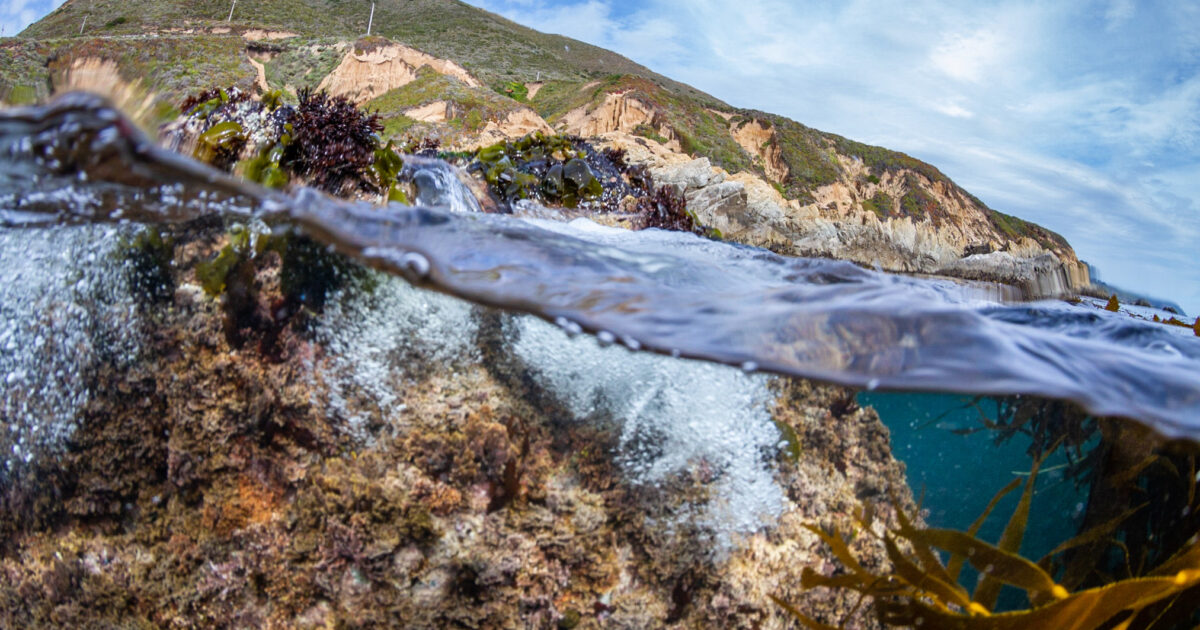
By Joe Platko
Joe is a nature and underwater photographer and a graduate of CSU Monterey Bay with a Bachelor of Science in Marine Ecosystems. Joe has been published by the New York Times, BBC, Huffington Post, British Airways Highlife Magazine, Virgin, and The Outbound Collective. His work has also been used by The Monterey Bay Aquarium and BBC’s Blue Planet 2.

Monterey Bay is a world-class dive site located two hours south of San Francisco. Within its large marine sanctuary is an abundance of life, from large marine mammals like humpback whales, sea lions, and sea otters, to thick kelp forests teaming with schools of rockfish and invertebrates. And yet, a typical response when asking if someone wants to dive here is, “No way, it’s too cold!” While the water does typically range from a temperate 48-55 degrees Fahrenheit, given the proper exposure protection, divers can enjoy all the natural wonders without worrying about the cold.
WETSUITS

Most people that dive wet in Monterey use a 7mm wetsuit or semi-dry suit, as well as a 5-7mm hood, boots, and gloves. Of the two, semi-dry suits are favored as they are much better at retaining body heat throughout a dive, and don’t flush due to their better wrist and ankle seals. If you are more susceptible to the cold, I recommend you wear a hooded vest in addition to the full suit, or use a two-piece farmer john suit. I personally prefer to use a 7mm Ultrawarmth wetsuit and a 5mm hooded vest on days where I’m either covering more ground on dives, on dives where I’m primarily diving shallow (30-40′ or shallower), and when I don’t plan on being in the water all day. I also like to use wetsuits when photographing as it allows me to move around easier, and I don’t have to worry about air rushing to my feet when put in awkward shooting positions, such as trying to photograph under ledges.
DRYSUITS

For divers wanting to stay at depth longer, or those that are extremely susceptible to cold, a drysuit is the way to go. I’ve found that the undergarments you wear will slightly depend on what material drysuit you use. For trilaminate suits, I recommend polar undergarments, or a combination base layer and mid layer for those that typically run warmer. For neoprene suits, I would either use a combination of base- and mid-layers, or during the warmer months use just a mid-layer. Typically, I use a drysuit when doing longer dives at depth. I’ll also usually dive a drysuit when leading multiple dive tours in a day, if I have to dry off and work right after a dive, or when I plan on hunkering down and not moving much on dives (such as when shooting macro). For these conditions I often just use a full mid layer suit and find myself staying quite toasty throughout the dives. However, on the few days we get an upwelling event and the water temps dip below 50 degrees, I’ll also throw on a base layer for added warmth. Doubling up with both base and mid layers has allowed me to stay quite warm even when diving in British Columbia in winter, when the waters were around 44-45 degrees and it’s below freezing topside.
Read what it’s like to swim with crocs, manatees and whale sharks in the Yucatan, Mexico











